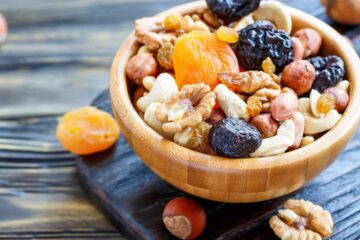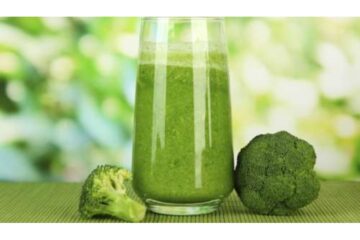Researchers compiled the most recent findings regarding the black chokeberry, Aronia melanocarpa, and its potential for disease control and prevention in a review that was just published in the journal Food Science and Human Wellness. Critical black chokeberry metabolites, their corresponding anti-disease (prevention, adjuvant, and therapeutic) qualities, and the various mechanisms of action that these useful constituents have on the human body are compiled and presented.
The medical history of black chokeberries
Known by its common name, black chokeberry, Aronia melanocarpa is a shrub with branches that is indigenous to eastern North America. It is a member of the Rosaceae family and is distinguished by its glossy, dark green leaves that change to red in the autumn. Black chokeberry is currently grown in large-scale facilities across Canada, Bulgaria, Hungary, the Czech Republic, and Poland as a result of studies into its potential health benefits.
In North America, black chokeberries have long been used as a cold remedy. However, as clinical research has increased, they may also be able to cure metabolic (hyperlipidemia and hyperglycemia), cardiovascular, and cerebrovascular disorders. Black chokeberries have also been shown to have strong immune-regulating properties in certain in vitro models, especially anti-inflammatory and anti-cancer benefits.
Black chokeberry functional components
The main factor responsible for A. melanocarpa’s functional activity that is relevant to medicine is its extensive and varied polyphenol content. It has been reported that fresh black chokeberries might include as much as 2994 mg/100 g of these chemicals, which are phenolic acids and flavonoids. Anthocyanins, flavonols, and flavonoids are further subdivided under flavonoids. Comparably, caffeic and chlorogenic acids were included in the phenolic acids of black chokeberries.
The most concentrated form of polyphenols found in black chokeberries is flavanol. Studies have shown that this herb’s medicinal effects are mostly due to the antioxidant qualities of its metabolites, which eliminate and neutralise free radicals in people’ bloodstreams to help fight a variety of chronic illnesses.
pharmacological actions
Black chokeberry polyphenols have been shown in clinical trials to considerably lower blood lipid levels by reducing adipogenesis and blocking the small intestine’s ability to absorb cholesterol. As a result, supplements containing black chokeberries are useful in reducing obesity and hyperlipidemia and, consequently, the risk of developing cardiovascular and cerebrovascular illnesses. Black chokeberries have anti-obesity properties that also affect fat digestion. Several functional polyphenols in black chokeberries block the action of pancreatic lipase, which lowers the absorption of fat and the buildup of visceral fat.
In vivo rodent models have demonstrated that four weeks of black chokeberry extract dramatically lowered plasma cholesterol, even in mice that were genetically modified by inactivating their apolipoprotein E gene. This prevented or postponed the onset of cerebrovascular and cardiovascular illnesses.
It’s encouraging to know that black chokeberry extracts significantly improve gut microbiota because a lot of the fruit’s components enter the colon after intake. It has been discovered that these elements lower the Firmicutes/Bacteroidetes ratio (F/B ratio) and boost gut microbial diversity. These modifications, along with higher relative abundances of advantageous Bacteroides, Prevotella, and Akkermansia species, have been demonstrated to decrease liver steatosis and obesity and to promote dyslipidemia in murine models. This is noteworthy because the F/B ratio has been identified as a critical feature of obesity.
Additional research has shown that black chokeberries can be beneficial in treating hypertension. Hypertension is a complicated cardiovascular disease that is characterised by increased arterial blood pressure and is caused by a complex interaction of multiple hereditary and environmental variables. Studies have shown that cyanidins, a subtype of anthocyanins, and chlorogenic acid can significantly lower arterial blood pressure in black chokeberry extracts (which include both polyphenols and non-polyphenols). In spontaneously hypertensive rats, four weeks of black chokeberry consumption was adequate to stabilise both the diastolic and systolic blood pressure.
Black chokeberry extract-consuming rats passed pee more frequently and in larger amounts than their control counterparts, according to analyses of the daily urine volumes of these rats. This suggests that black chokeberries may have diuretic properties. This herb’s antioxidant qualities can lower blood pressure even further by eliminating free radicals that damage organs, decreasing blood lipid peroxidation, decreasing oxidative stress, and decreasing vascular dysfunction.
Additionally, studies have demonstrated the strong anti-inflammatory and anti-hyperglycemia effects of black chokeberries. These herbs’ polyphenols, particularly their cyanidins and chlorogenic acids, exhibit strong inhibition of α-amylase activity. In addition, it has been discovered that the anthocyanins in black chokeberries suppress the expression of metabolic genes (such insulin resistance), which leads to hypoglycemic effects.
In conclusion
Although consuming raw black chokeberries in excess can lead to mild side effects, such as diarrhoea, due to their high tannin content, studies have shown that utilising this herb and its extracts as a dose-monitored auxiliary therapeutic food could have major advantages for immune function, blood pressure, and human energy metabolism.
Unfortunately, in vitro research is how most investigations on black chokeberries are carried out. Although there are in vivo investigations, most of them are conducted in murine or other animal models, and there is a paucity of information from clinical trials involving humans. However, further studies conducted in vitro and in vivo on mice have identified these herbs as a rich source of functional components with medical significance. Future studies could bring these underappreciated plants to light as a safe, natural, and affordable substitute for a wide range of traditional medicinal approaches.


